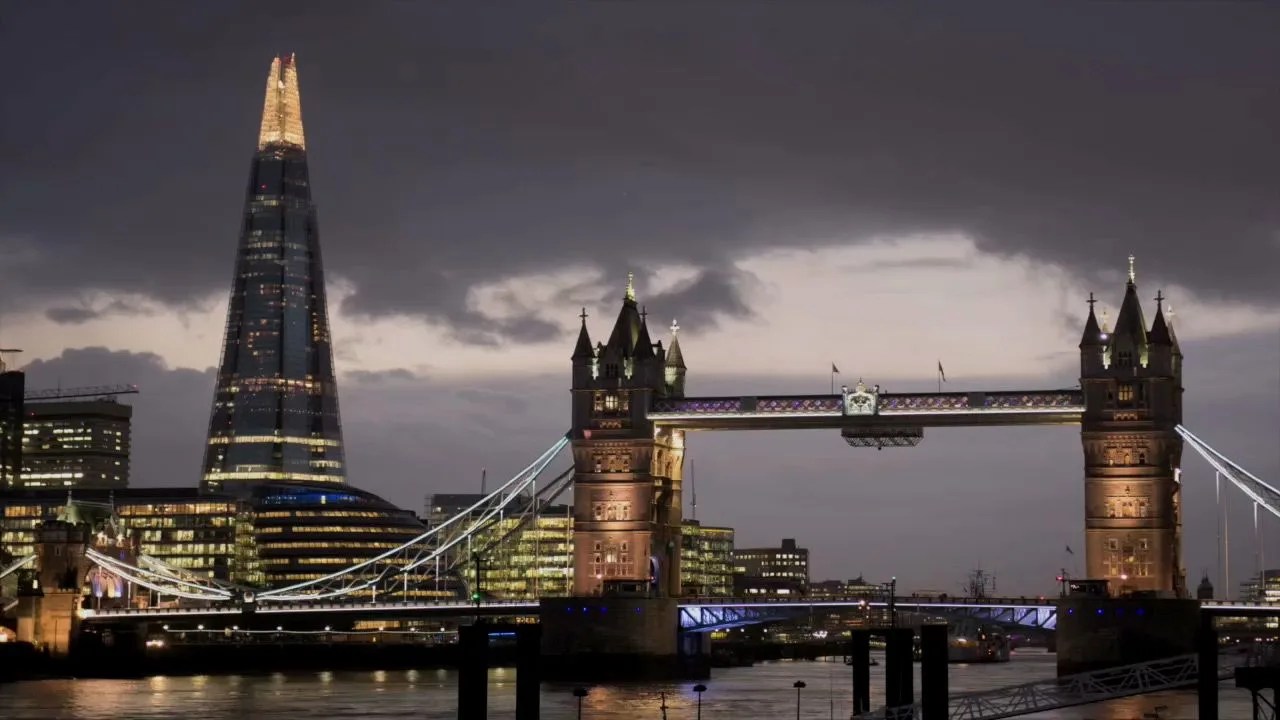
So often we look beyond the walls of our surroundings in an attempt to grasp everything around us — to better understand our place. Where are we? When are we? Nowhere is this more aptly embodied than in the throes of architecture. From pole to pole, the pervasive, vast trade spans projects from home renovations to soaring landmarks only describable through prepositions: above, within, beyond.
Architecture is often measured through epochs and time-based nomenclature like mid-century, brutalism, postmodern and modern. It’s not a coincidence. The discipline provides a glimpse into the future that’s framed within an understanding of the past. It helps us not to simply grasp our surroundings, but to associate a moment — or a structure — with a time.
For our latest survey, we immersed ourselves in the current state of 21st-century architecture. Narrowing down such a broad subject to a mere list of 21 entries, so soon, is bound to create fallout; our list isn’t immune. To maintain focus, we’ve kept the list’s parameters within the realm of completed public and private institutions, avoiding the vast world of home designs and projects still under construction. We’re less than 15 years into the 21st century, and only time will tell if the impact of these buildings will endure. But one thing is for certain: these buildings are emblematic of our world today. – Eric Yang
Absolute World
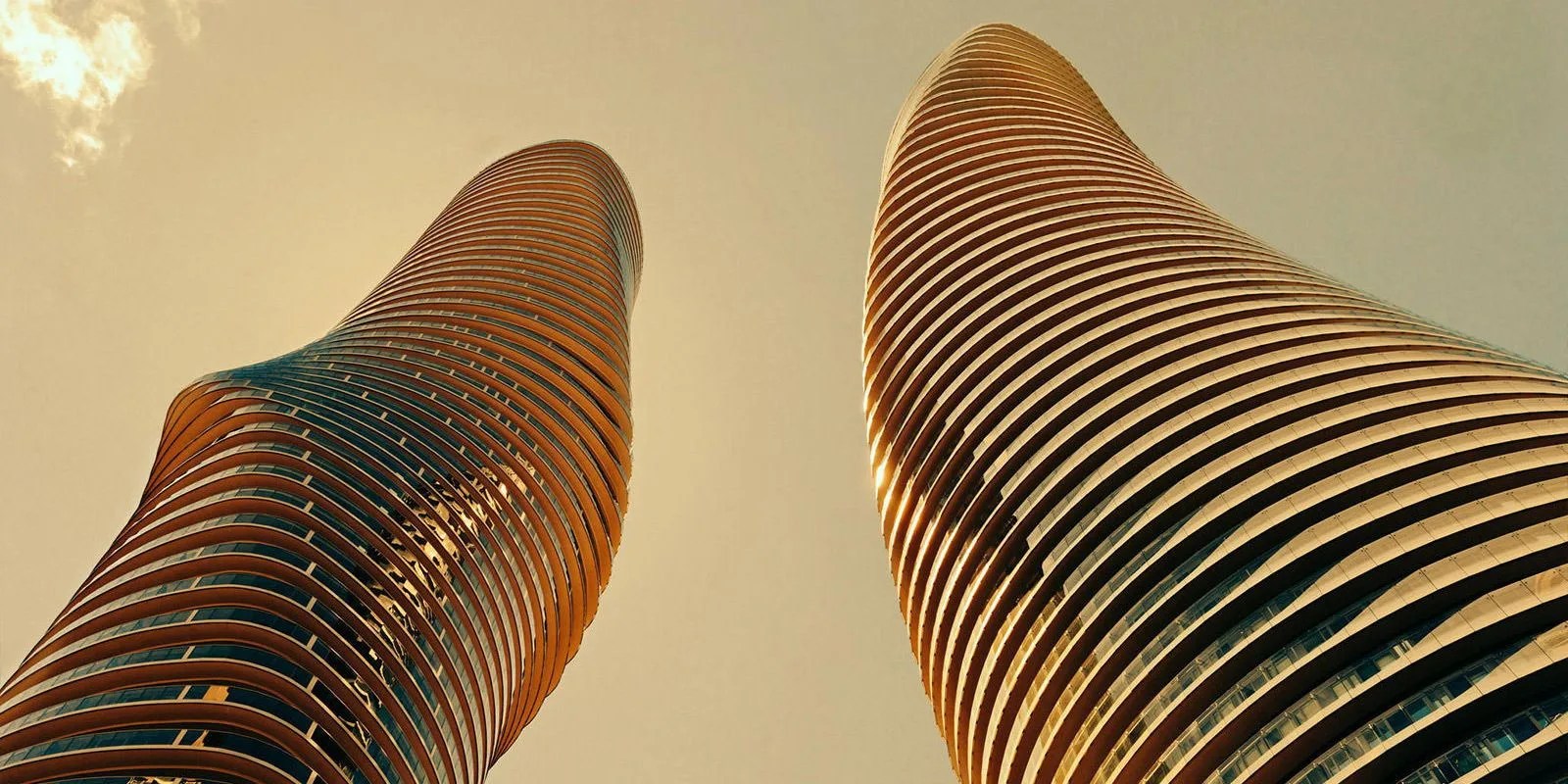
Absolute World consists of two skyscrapers in a five-building residential condominium complex in Mississauga, a suburb of Toronto. Eschewing the boxy confines of the traditional residential skyscraper, Absolute World incorporates a 206-degree twist into its 50- and 56-story towers. Though the project was initially planned as just one tower, when the architect submitted the radical, organic design, the entire building sold out in a matter of days and a second lot was purchased and planned. Also called the Marilyn Monroe towers, the flowing buildings stand out among the comparatively bland Mississauga skyline and offer a unique floorplan and design for each floor.
BURKA ARCHITECTS, MAD STUDIO
2010
MISSISSAUGA, ONTARIO
914,930 SQ FT
Auckland Art Gallery
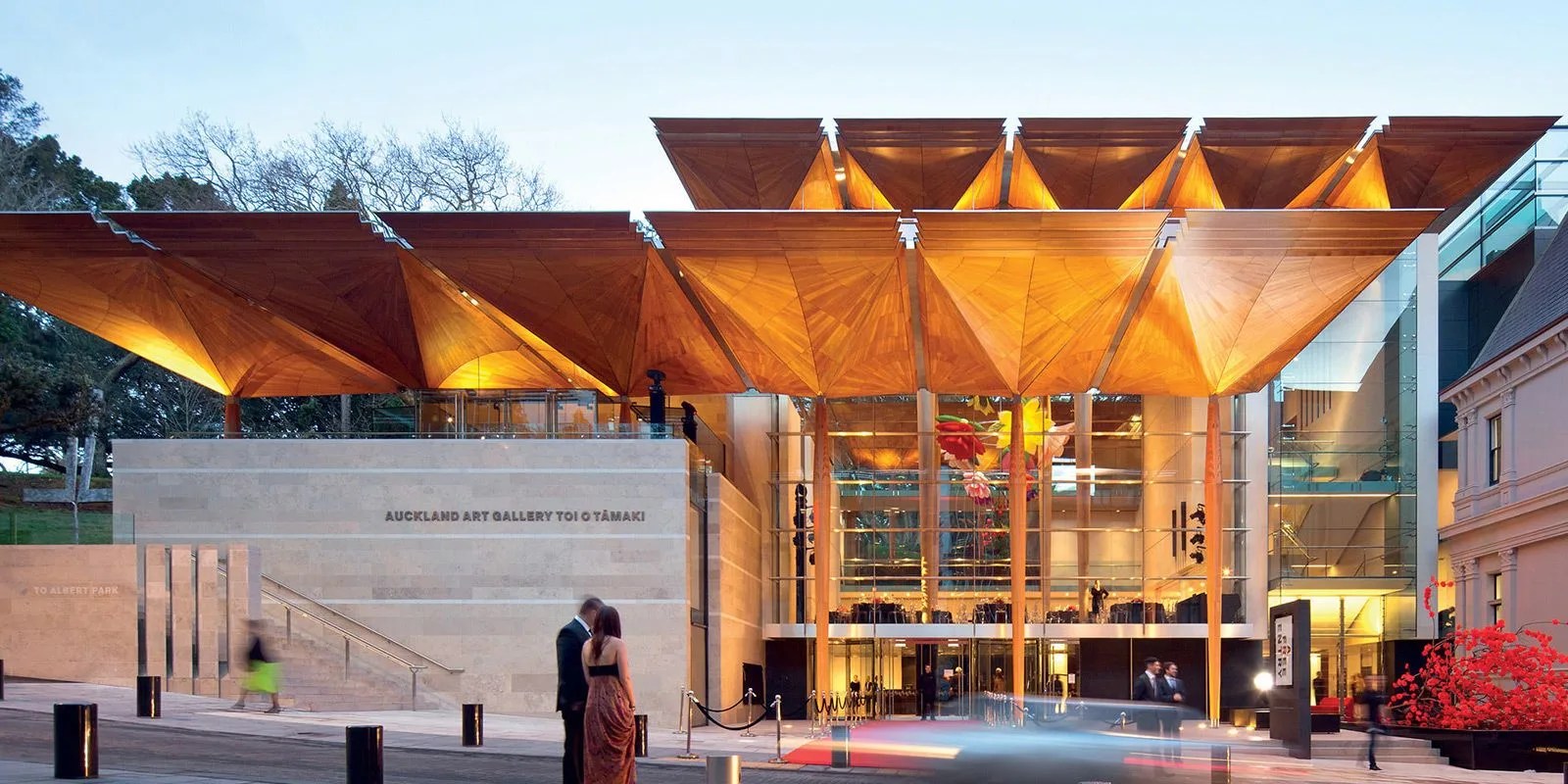
When it came time to refurbish and expand Auckland’s art gallery, architects FJMT and Archimedia wanted to seamlessly blend the new and old buildings while creating a design that references the surrounding area; within that framework they established a new architectural identity for the 116-year-old gallery. The result is a beautiful pairing of a wooden canopy and glass curtain walls that integrates the building with its wooded, Albert Park surroundings and the modern art housed within.
FJMT, ARCHIMEDIA
2011
AUCKLAND, NEW ZEALAND
Beijing National Stadium
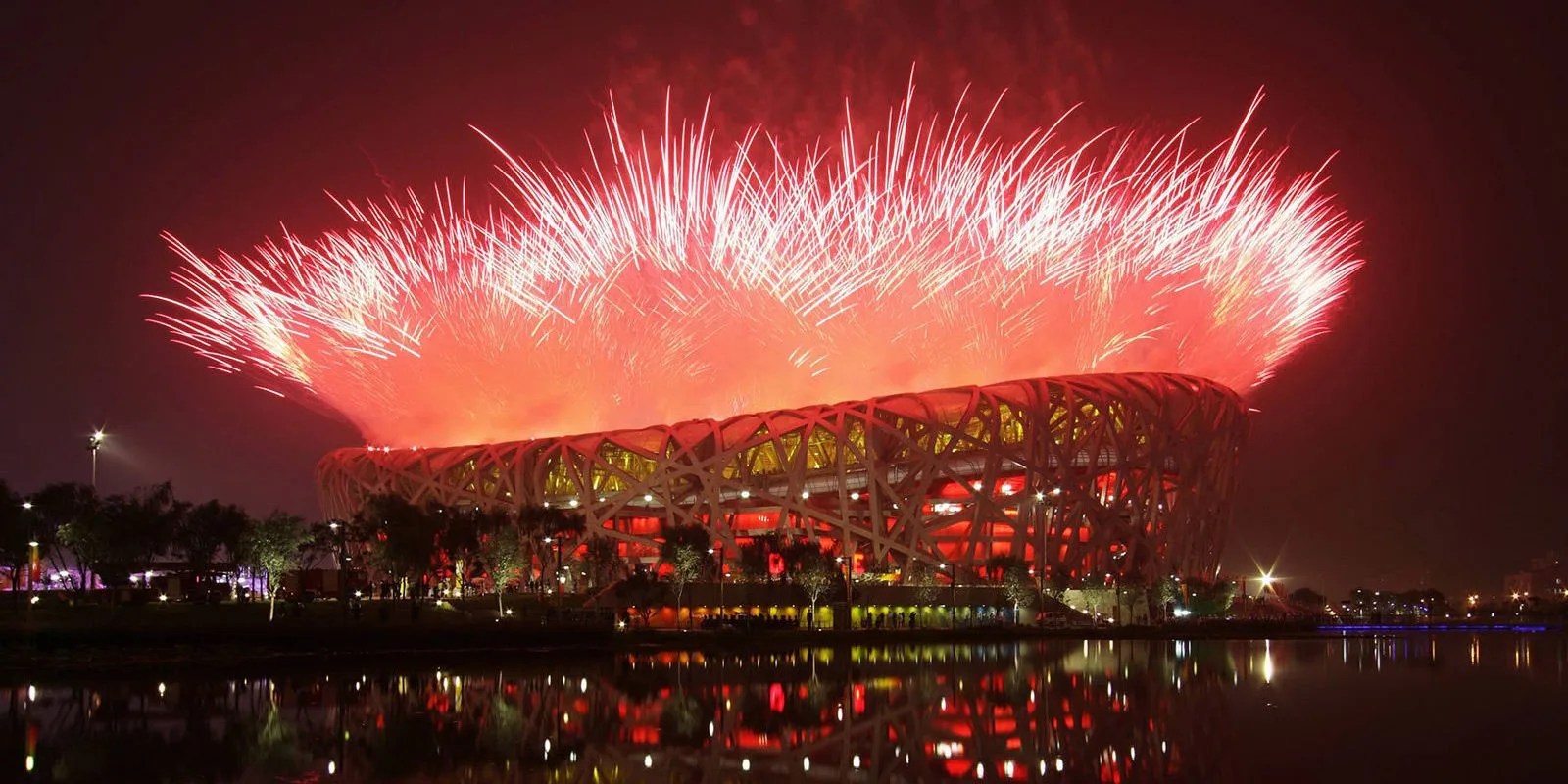
Home to the 2008 Olympic Games, the “Bird’s Nest” and its signature latticed steel construction was born from an international competition to create a landmark that would help China reintroduce itself to the world. Herzog & De Meuron’s winning entry was inspired by Chinese ceramics and included provisions for a retractable roof. Though the roof was later removed from the design, the latticed steel used to hide its supports remained as the stadium’s signature aspect. The building drew an impressive amount of praise during the 2008 Olympics but has since had trouble being integrated into daily use. Regardless of current problems, the Bird’s Nest irreversibly raised the aesthetic standards of sports stadiums to come.
HERZONG & DE MEURON
2008
BEIJING, CHINA
91,000 PEOPLE
The Blue Planet
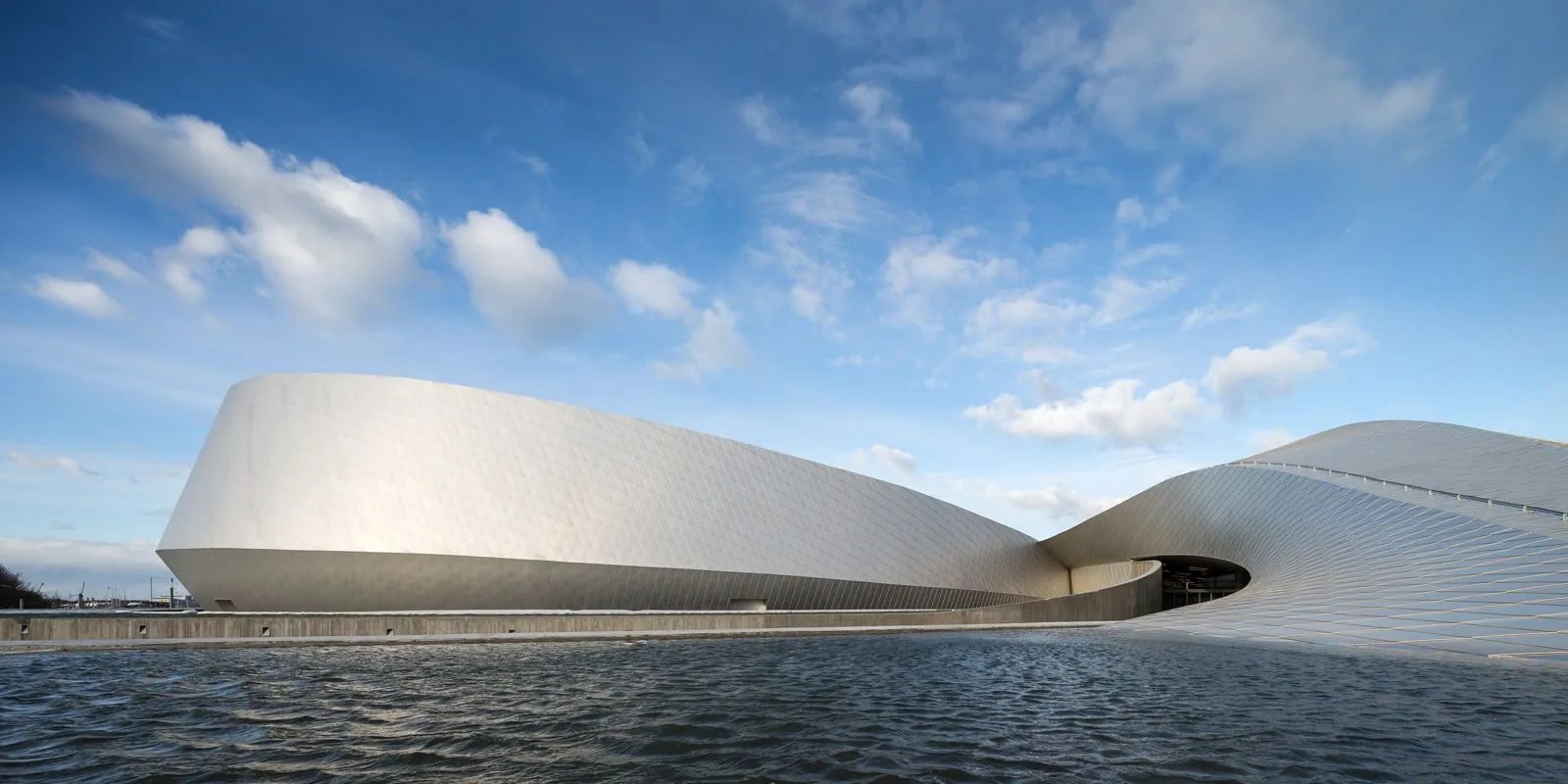
Appropriately called The Blue Planet, Denmark’s newest aquarium is home to 7 million liters of water and a design that suits the fluid nature of the ocean precisely. Designed to look like a whirlpool from above, The Blue Planet’s exterior seamlessly transitions from placid water features to sweeping, sculptural tiled stainless steel, effectively embodying the ocean’s power and beauty. Inside, the aquarium’s immersive exhibits all radiate from a central hub; the building itself can be expanded by 30 percent if the need arises. The design of The Blue Planet perfectly complements its intended purpose while adding to Copenhagen’s already impressive urban landscape.
3XN
2013
COPENHAGEN, DENMARK
97,000 SQ FT, 1,800,000 GALLONS OF WATER
BMW Welt
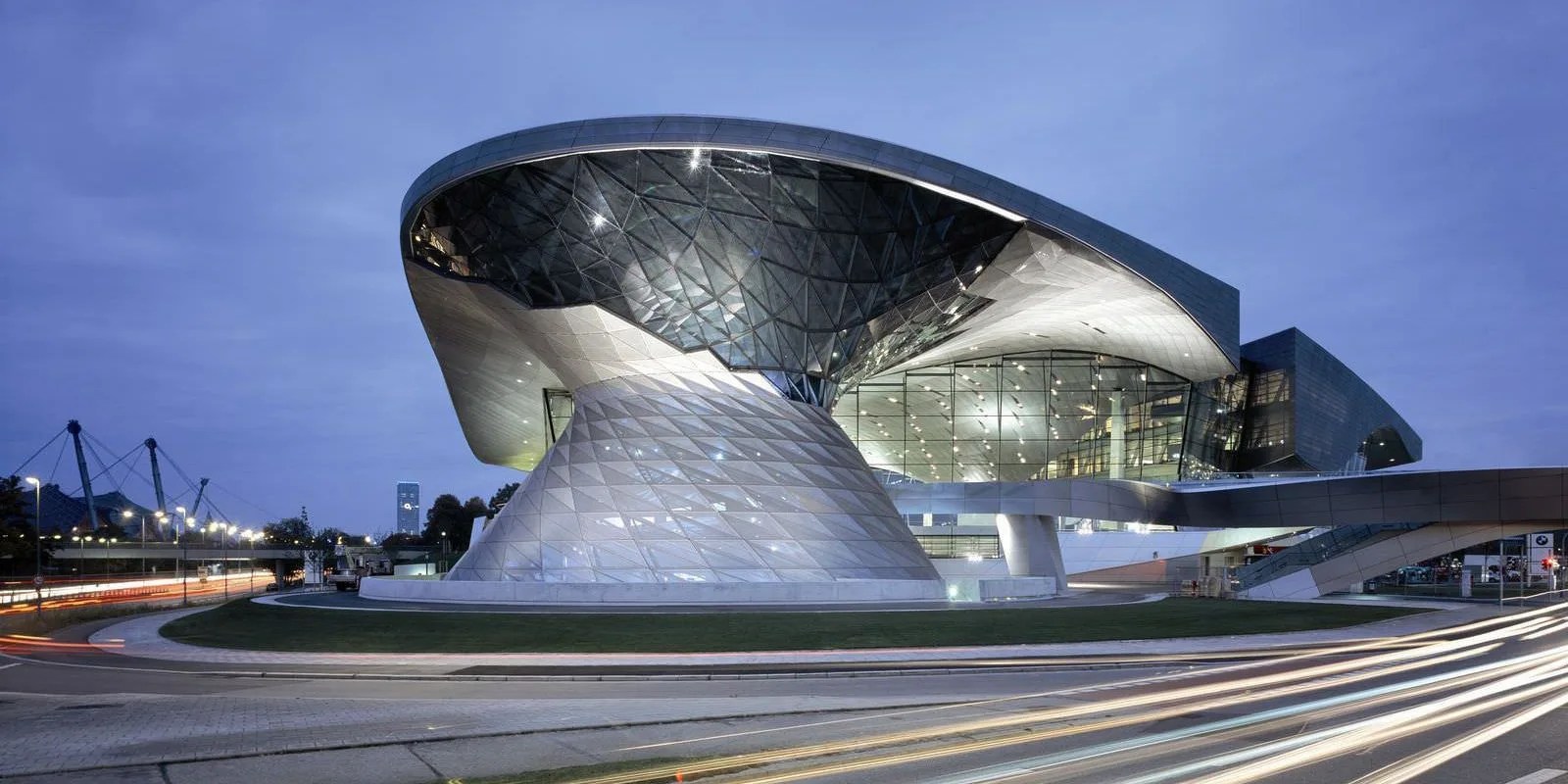
When BMW decided to build a new location where customers could immerse themselves in the Bavarian brand’s history and pick up their new cars (assuming they ticked the box for “European delivery”), they settled on a design choice that would mimic the technologically advanced design of their vehicles. BMW Welt certainly delivers. Boasting an incredible amount of swooping glass and stainless steel and featuring an 800kW solar array on its roof, BMW Welt conjures the same wonder and awe that the company hope to evoke with their four-wheeled designs.
COOP HIMMELB(L)AU
2007
MUNICH, GERMANY
785,765 SQ FT
Burj Khalifa
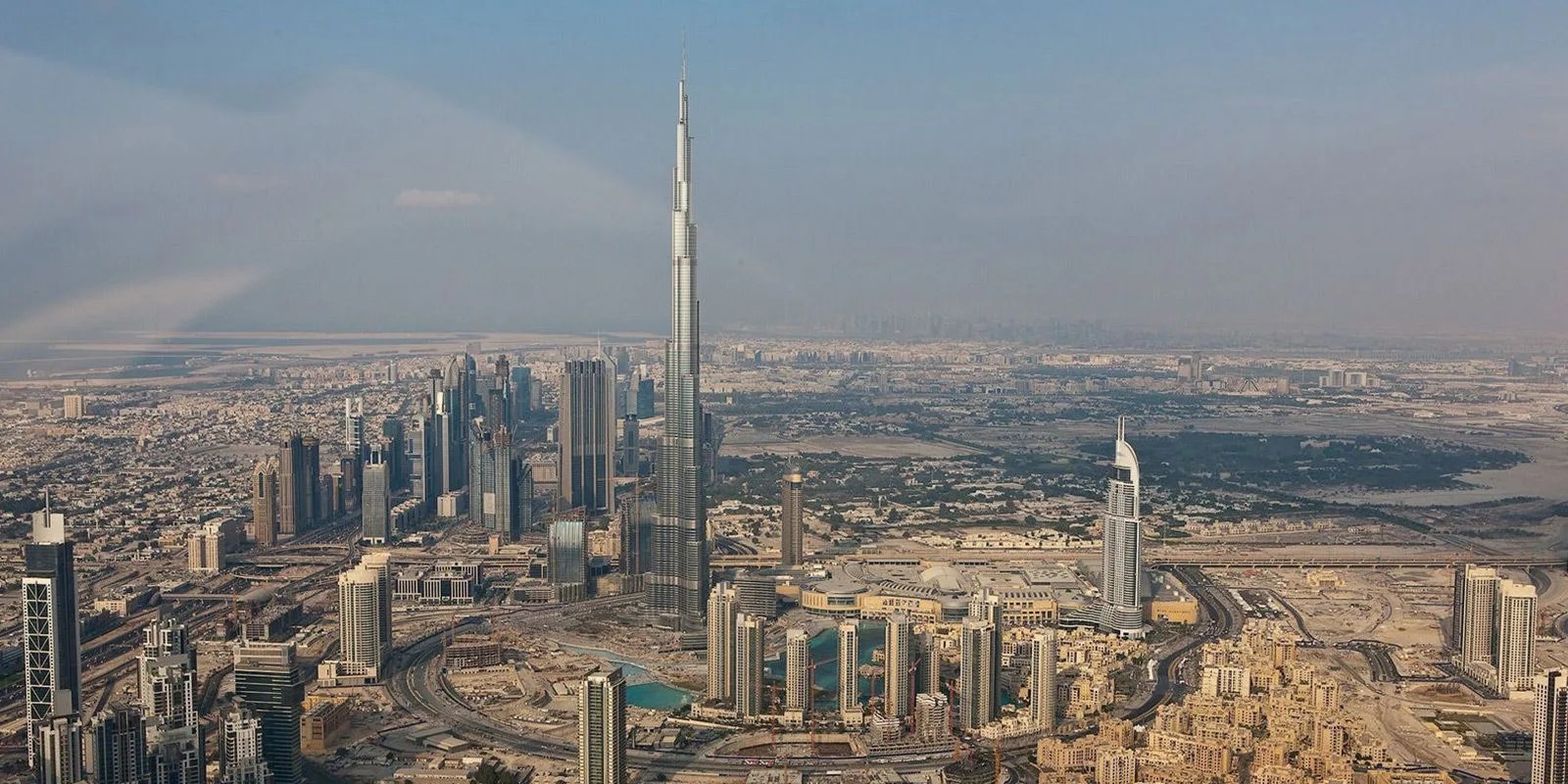
The very definition of form-follows-function design, the Burj Khalifa seems to be built entirely of improbable statistics. Standing at 829.8m (2,722 feet), it’s the tallest structure ever built, the tallest skyscraper ever built (a massive 320m taller than second-place Taipei 101), and home to both the world’s highest nightclub and the highest New Year’s fireworks display. Its tiered, tubular design is reminiscent of traditional Islamic architectural designs and owes a good bit of thanks to Frank Lloyd Wright’s theoretical mile-high building, The Illinois. The tower’s sheer extravagance makes one wonder what its future holds — it was built at the zenith of Dubai’s cultural and financial relevance — but chances are its awe-inspiring stature will grace the desert skyline for some time to come.
SKIDMORE, OWINGS AND MERRILL
2009, OPENED 2010
DUBAI, UAE
3,331,100 SQ FT
The City of Arts and Sciences
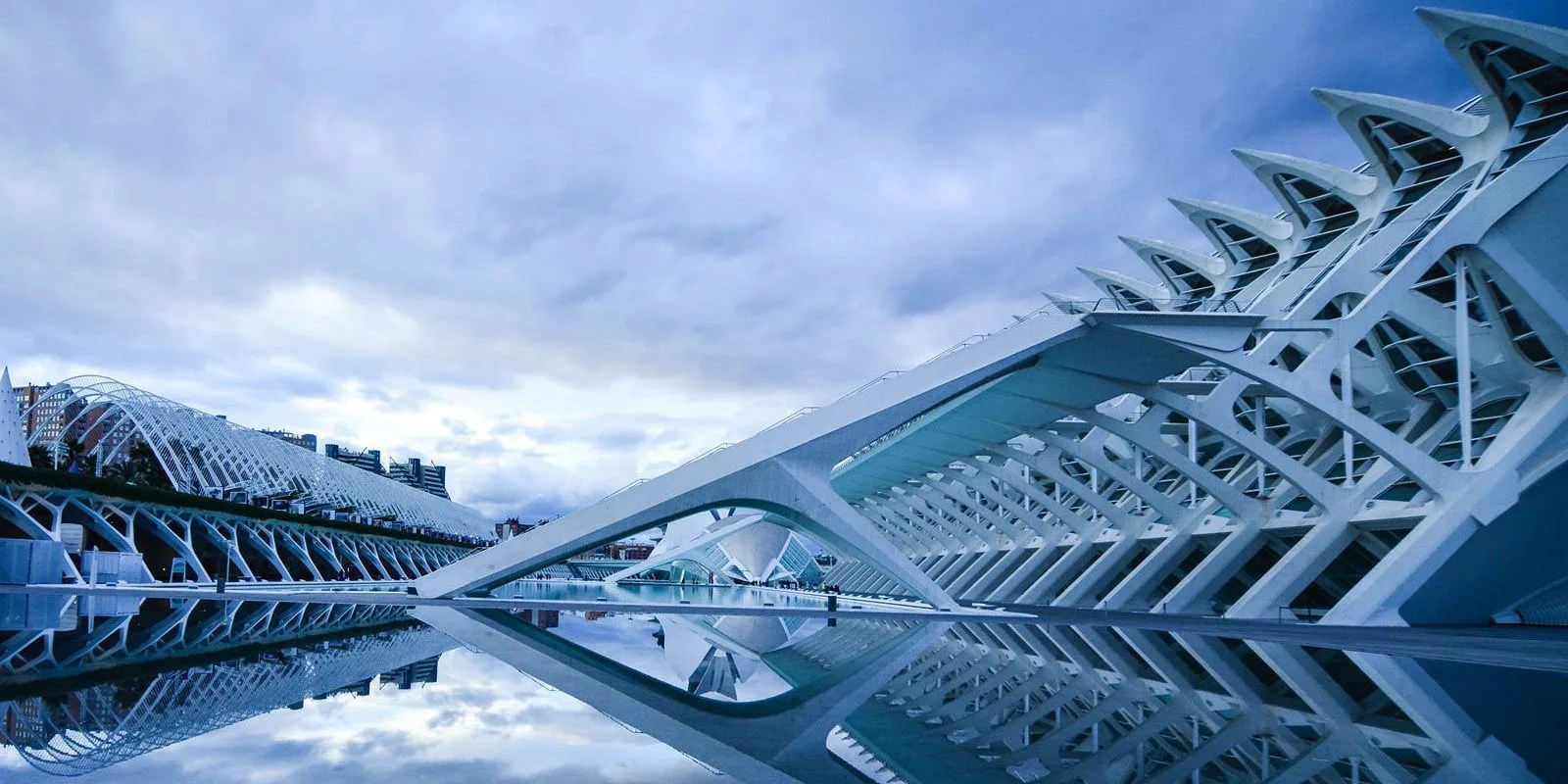
Less of a single building and more of a compound, the City of Arts and Sciences is a wonder of architectural design that inspires the same creativity and imagination-fueled wonder as the classics of art and science themselves. In a project brief that perfectly suited the style of Valencia native Santiago Calatrava, the City of Arts and Sciences is a set of seven buildings (plus plans for three skyscrapers that have been all but scrapped) situated in the former riverbed of the Turia. Each building is largely composed of picturesque white concrete and large swathes of glass and stainless steel that wouldn’t look out of place in a Jules Verne Novel. As a place to inspire a love of art and science, Calatrava’s masterpiece is unbeatable.
SANTIAGO CALATRAVA AND FELIX CANDELA
2005
VALENCIA, SPAIN
3,767,369 SQ FT
California Academy of Sciences
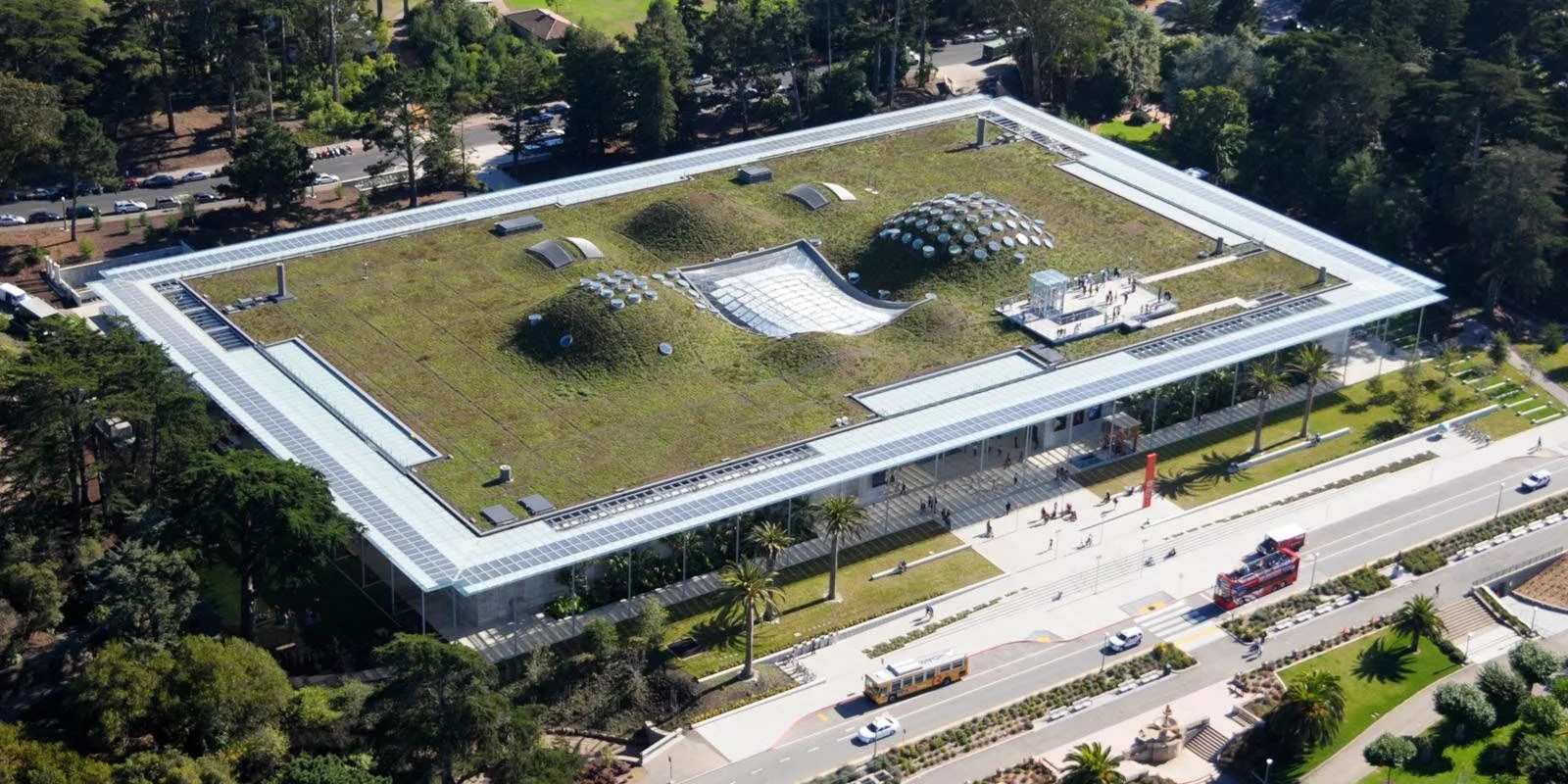
Much like Valencia’s City of Arts and Sciences, the California Academy of Sciences is a building that can’t help but inspire grand thoughts of discovery and adventure. The building looks reasonably simple from the ground, but from a higher vantage point, details like the undulating green roof and glass curtain walls begin to stand out. On the inside all bets of simplicity and boring contemporary design are off as visitors encounter gigantic rain forests enclosed in glass spheres and massive aquarium walls. The architecture adds more than a sense of occasion, though; rainwater recycling, 60,000 photovoltaic cells, and a 2.5-acre green roof helped it achieve the nigh-impossible LEED (Leadership in Energy & Environmental Design) Platinum certification.
RENZO PIANO
2008
SAN FRANCISCO, CALIFORNIA
410,000 SQ FT
Disney Concert Hall
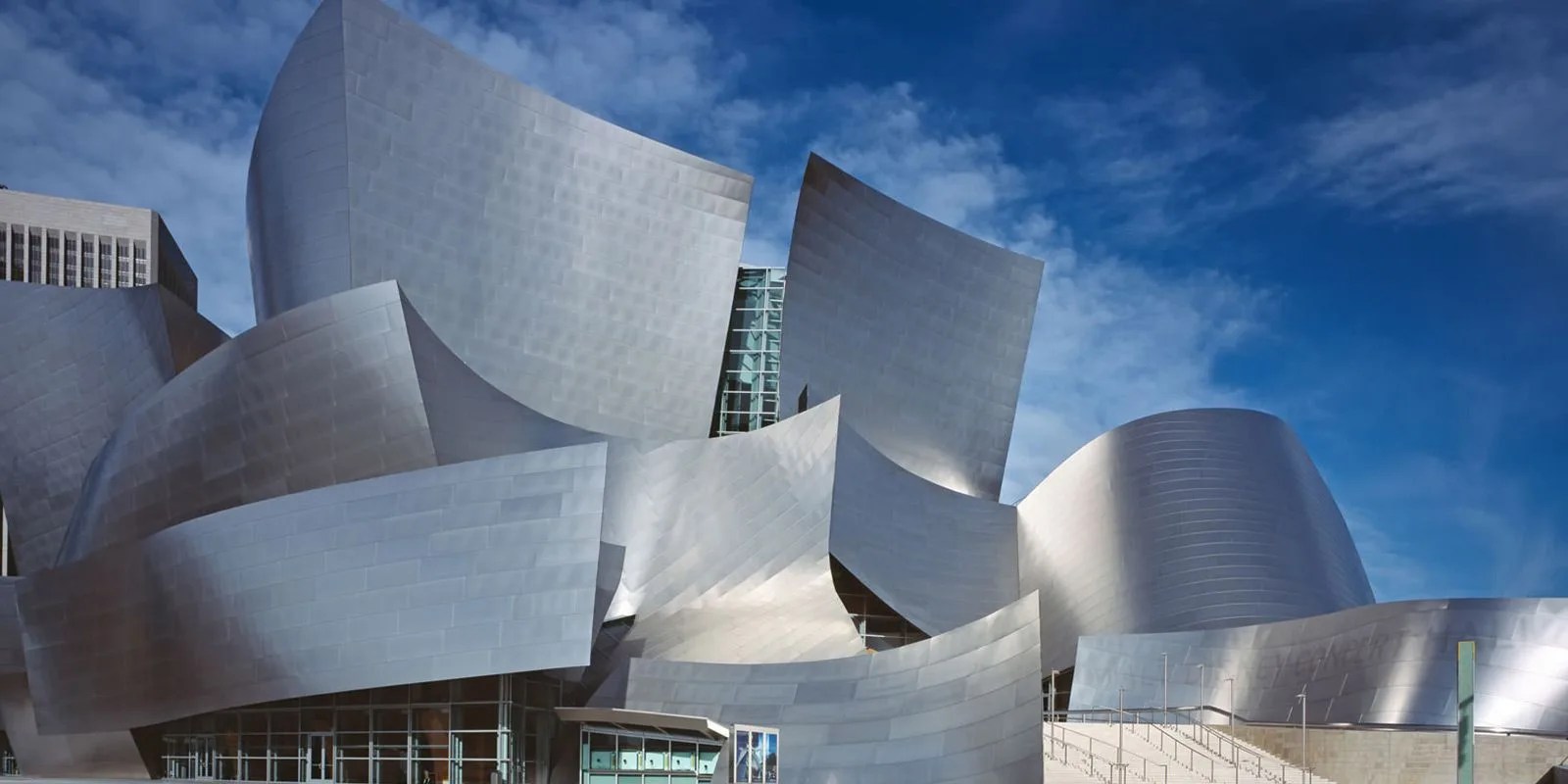
The Disney Concert Hall is a polarizing building. Some say the postmodern Frank Gehry-designed hall is reminiscent of a crumpled piece of paper; others declare it a masterpiece for the ages. Whatever the disagreements, its place as a focal point of contemporary architecture is well established. The miniaturized Guggenheim Bilbao was plagued by massive delays and funding issues: while Gehry had submitted the designs in 1991 (a year before he submitted designs for its Spanish counterpart) it wasn’t completed until October of 2003 (six years after Bilbao). Despite delays, issues with glare-inducing panels, and polarizing design, the Walt Disney Concert Hall is an incredibly iconic piece of 21st-century architecture sure to inspire arguments for years.
FRANK GEHRY
2003
LOS ANGELES, CALIFORNIA
2,265 PEOPLE
Gardens by the Bay
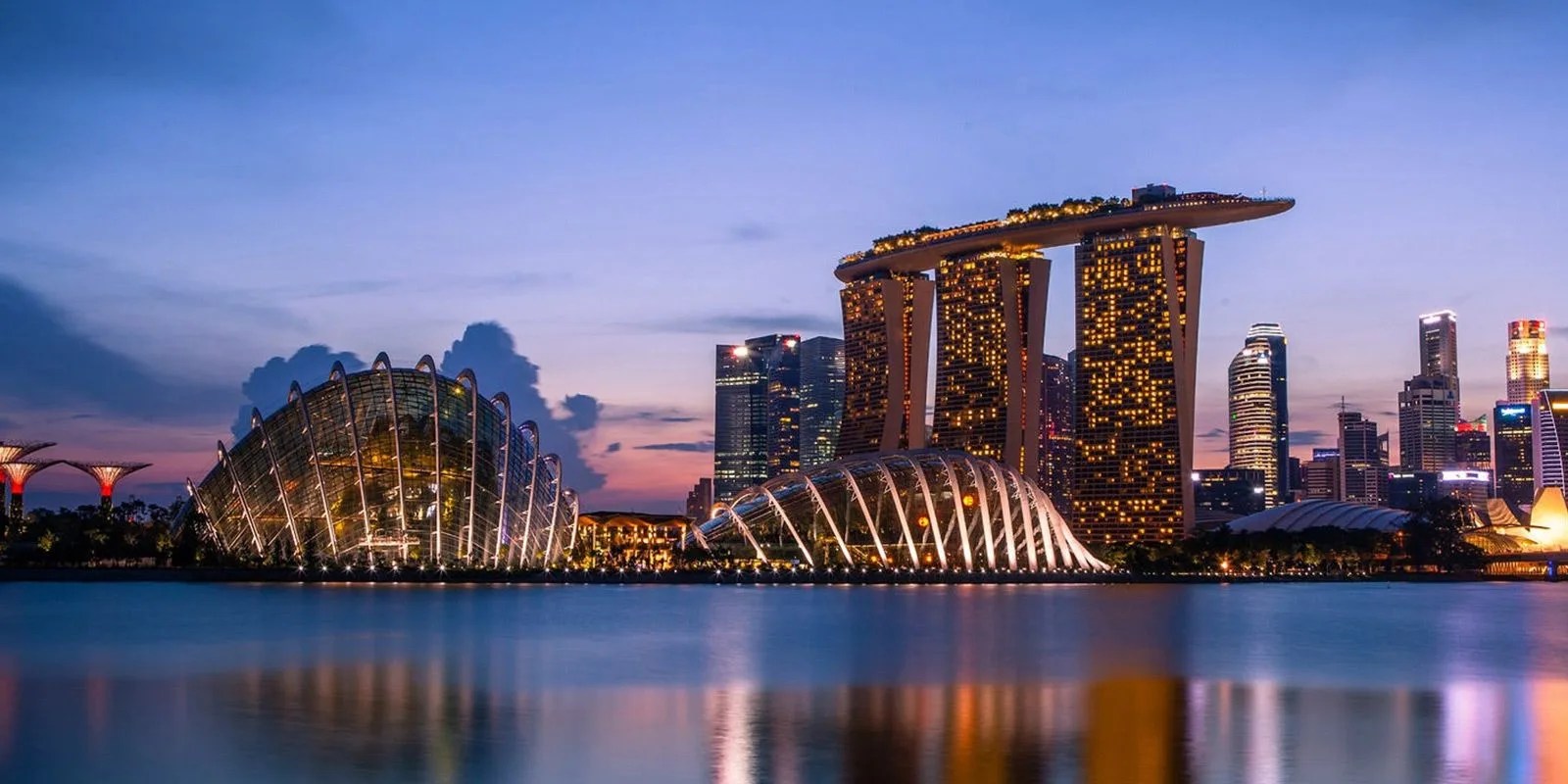
One of the largest garden projects in the world and located right in the heart of Singapore’s Marina Bay, Gardens by the Bay provides tourists and locals with a vast array of flora in a stunning environment. Architectural highlights of the gardens include two massive cooled conservatories that use innumerable glass panels to create an organic-looking shape far removed from the boxy conservatories of old. Also notable are its 18 “Supertrees”, which vary between 25m and 50m in height and create a surreal, fantastical environment throughout the park.
GRANT ASSOCIATES, WILKINSON EYRE
2012
SINGAPORE
10,872,000 SQ FT
Guangzhou Opera House

After a star-studded design competition that saw Rem Koolhaas (CCTV Headquarters, Seattle Library) and Coop Himmelblau (BMW Welt) submit designs, Iraqi architect Zaha Hadid’s entry was selected as the basis for southern China’s biggest performing arts center. Constructed mostly of concrete (a pervasive theme in this list) accented with granite, steel and glass and shaped into two smoothed geometric designs (dubbed the “double pebble”), the opera house has an organic, futuristic design that strikes the balance between distinctly man-made and organic.
ZAHA HADID
2010
GUANGZHOU, THE PEOPLE’S REPUBLIC OF CHINA
1,804 PEOPLE
Harpa Concert Hall
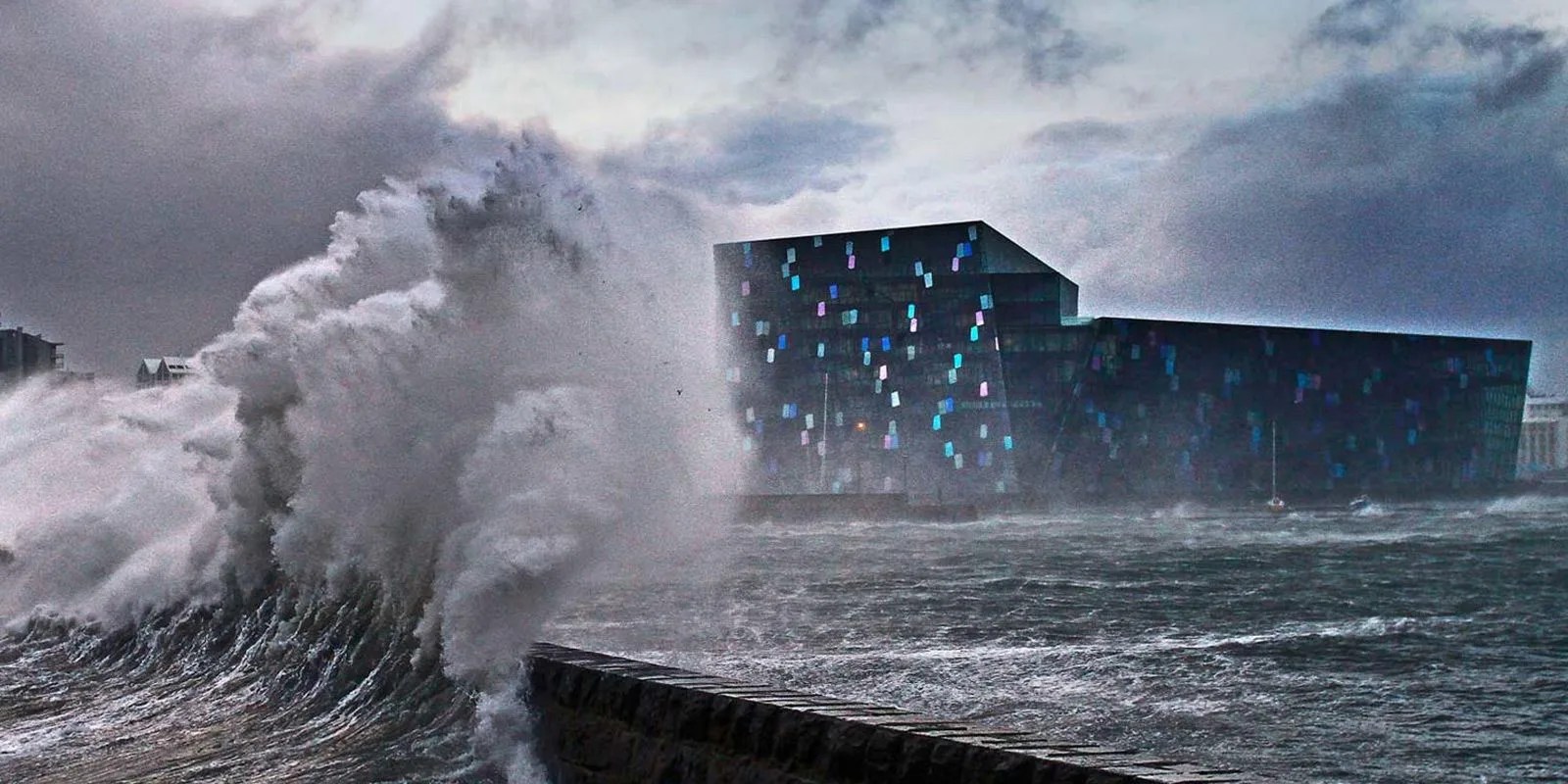
Continuing the theme of well-designed concert halls, Harpa (the building formerly known as the Reykjavik Concert Hall and Convention Center) is a geometric goliath of steel framing clad in multi-colored, green-tinted glass panels. Opened in the midst of the biggest depression in Iceland’s history, Harpa serves as a latticed-steel beacon of hope and cultural advancement.
HENNING LARSEN
2011
REYKJAVIK, ICELAND
300,000 SQ FT
MAXXI National Museum of 21st Century Arts
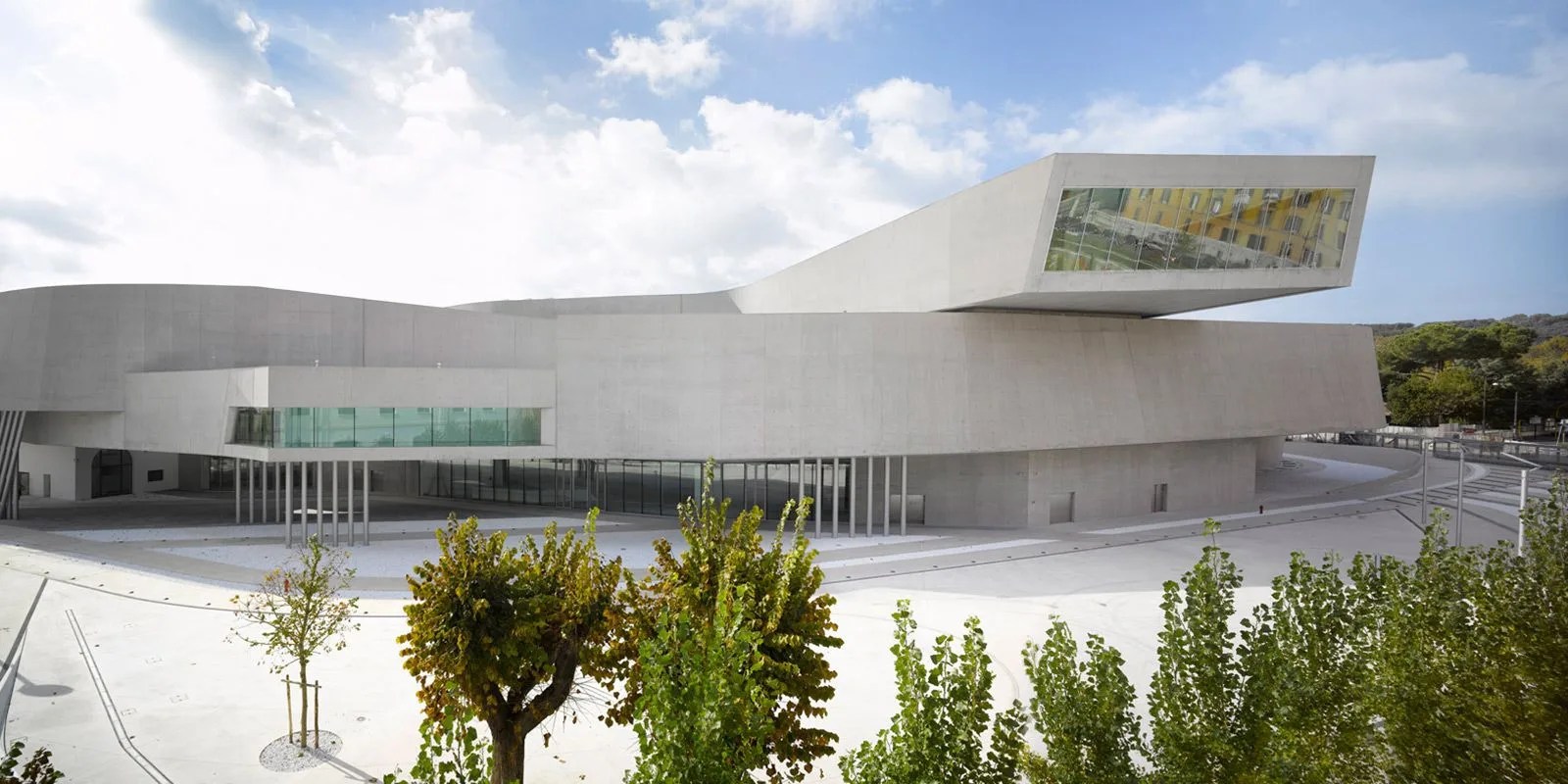
The Museum of Arts in the 21st (XXI) century is another of Hadid’s trademarked flowing concrete and steel leviathans; this one has an open space and a modular design that’s well suited to housing ever-changing arrangements of art. Great focus has been placed on natural light and smooth transitions between various sections and exhibits. Though you might think the futuristic building might stand out excessively against the neoclassical Roman surroundings, it all seems to work, likely because the Eternal City is smoothly transitioning into the future with additions like the MAXXI and Renzo Piano’s Auditorium.
ZAHA HADID
2009
ROME, ITALY
290,626 SQ FT
Metropol Parasol
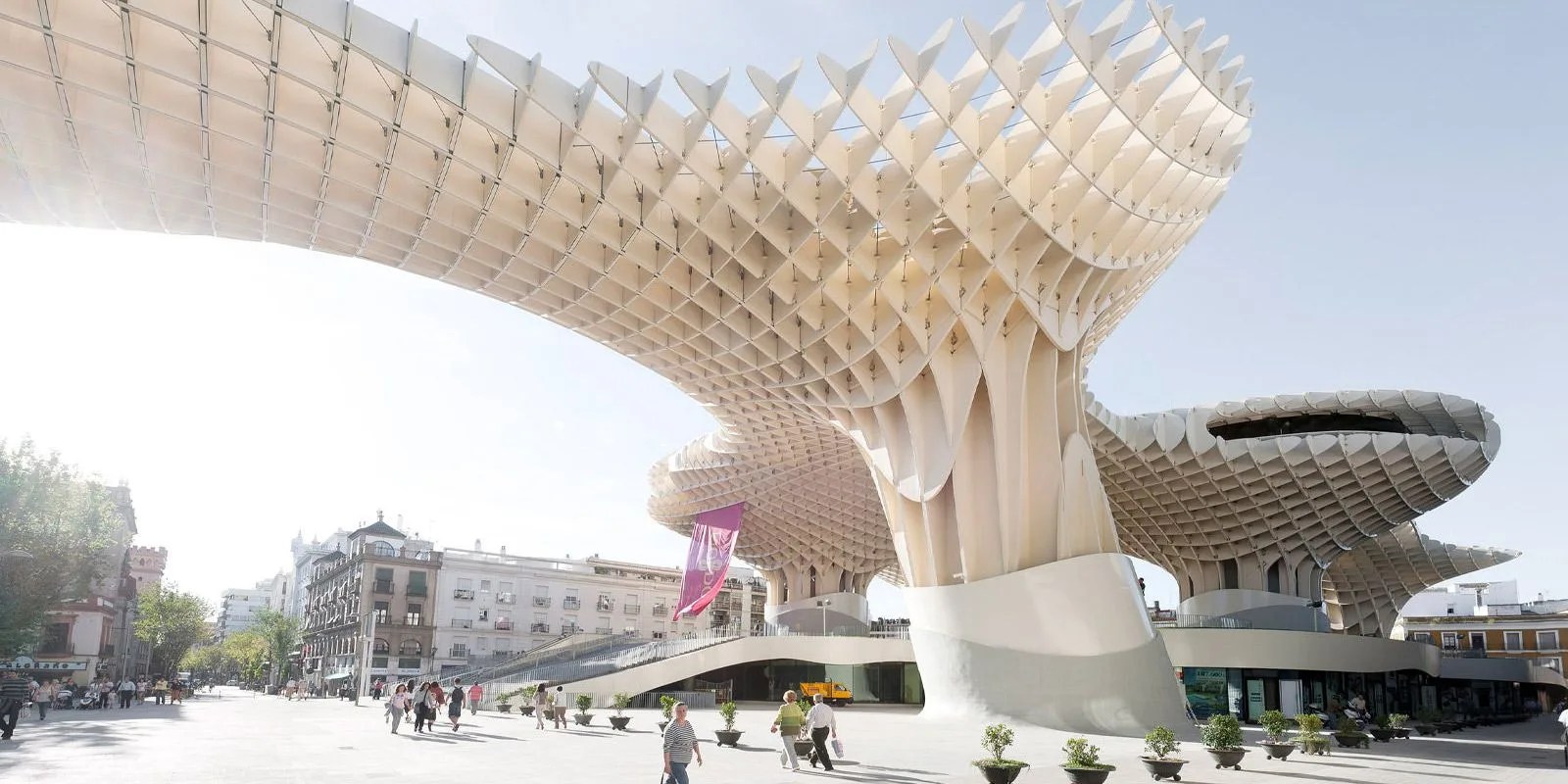
The Metropol Parasol is a sprawling birch form — it’s claimed to be the largest wooden structure in the world — raised 85 feet above the Seville city center. Housing an archaeology museum and a restaurant and providing shelter for the central market below it, the Parasol has integrated itself well into Seville’s daily culture. Though its construction was plagued with delays, engineering problems and exorbitant costs, its positive effect on the city is obvious and the effect when it’s lit up is fantastic.
ARCHITECT: JURGEN MAYER-HERMANN
YEAR: 2011
LOCATION: SEVILLE, SPAIN
SIZE: 112,700 SQ FT
National Center of the Performing Arts
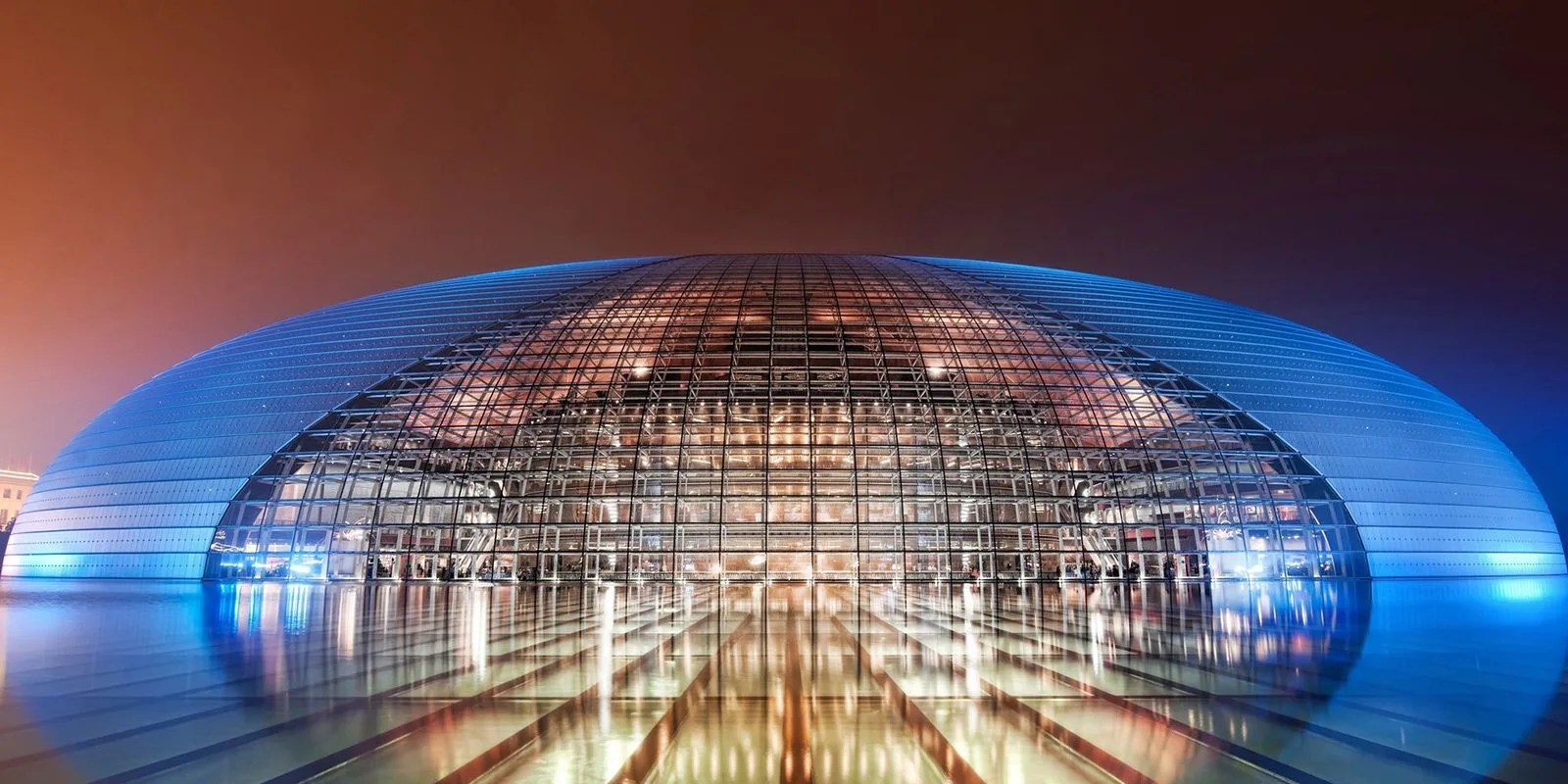
Often called “The Giant Egg” and reminiscent of the mouse packaged with old Apple iMacs, the National Center for the Performing Arts is a 5,452-seat-filled titanium-and-glass leviathan surrounded by an artificial lake. Paul Andreu’s design is a study in simplicity, light and transparency that stands in stark contrast to the ornate grandeur of the nearby forbidden city, signaling the arrival of a new, modern China.
PAUL ANDREU
2007
BEIJING, CHINA
2,361,600 SQ FT
Museum of Islamic Art
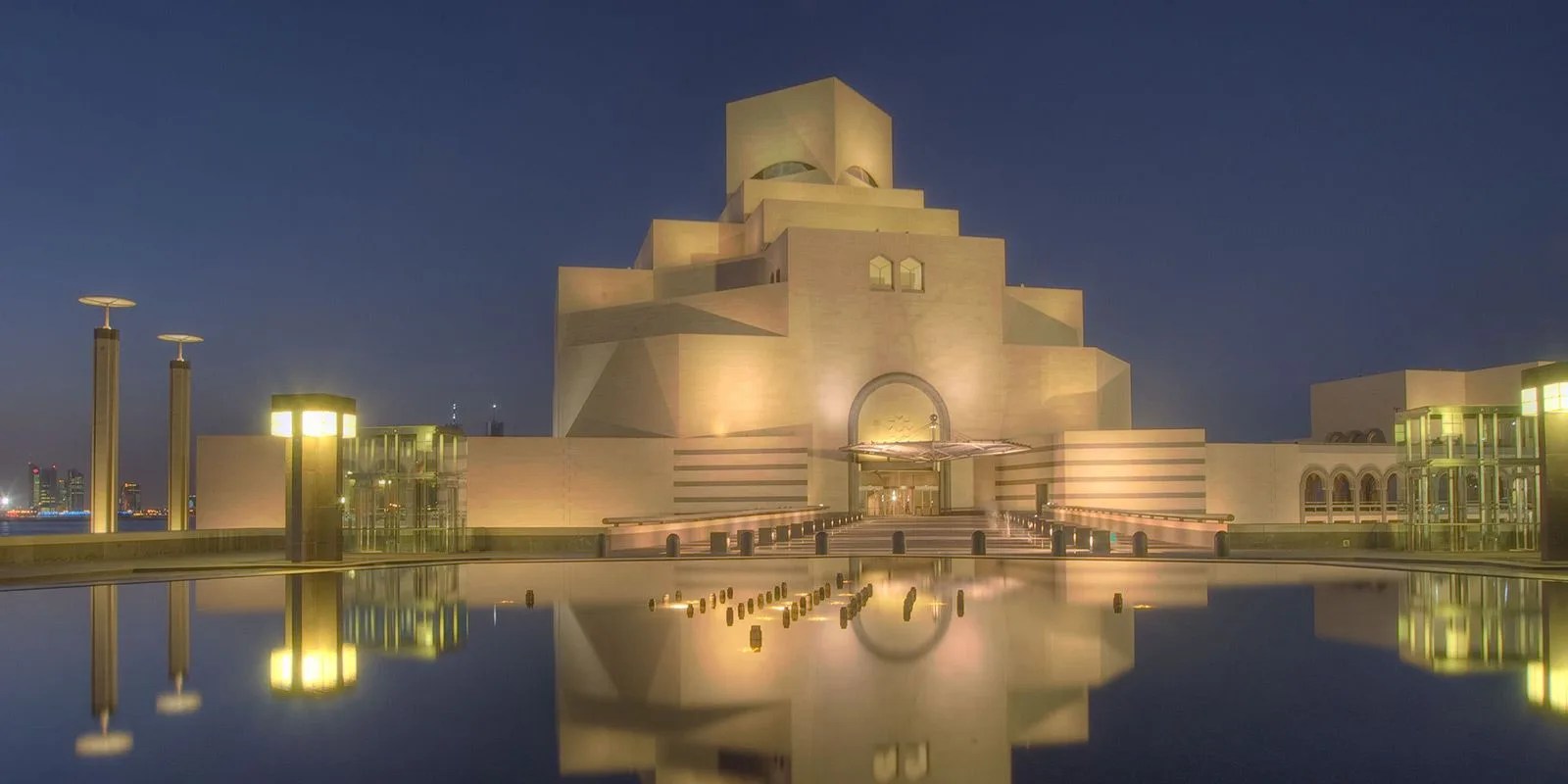
To tell the story of the Museum of Islamic Art’s creation is to tell the story of an uncompromising architect. When the project began, the first task was coaxing 90-year-old architectural icon I.M. Pei out of retirement. Pei — famous for adding beautiful expansions to museums like the National Gallery of Art and the Louvre — then spent six months touring the Islamic world for inspiration. Finally, when Pei was inspired and convinced to work, he suggested the building might look better if it was 60m offshore on a man-made island. And so it was. The resulting building is as distinctly Pei as it is Islamic, made of monumental chunks of stone stacked atop each other; the building seems to have been around for thousands of years, and lends to the thought that it will be around for many more.
I. M. PEI
2008
DOHA, QATAR
484,376 SQ FT
Norwegian Wild Reindeer Centre
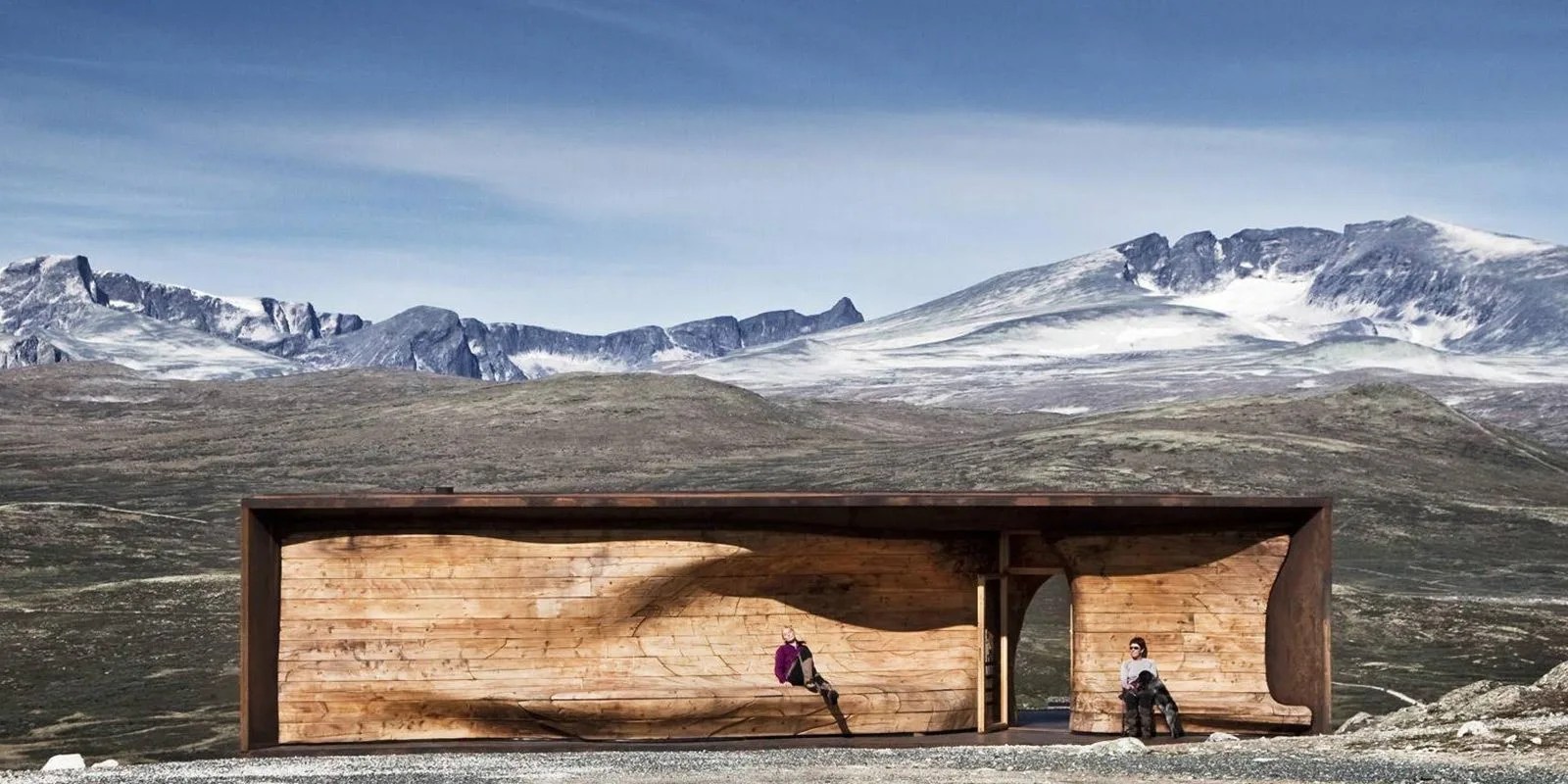
Located in Dovrefjell National Park, this small observation center is meant to shelter hikers and adventurers as they traverse the beautiful Icelandic landscape. The pavilion is constructed of a raw steel frame intended to rust and blend into the landscape even further as it ages. Inside is both a beautifully organic, sweeping wall of oiled pine that has been milled and joined together using wooden pegs, and a large glass wall facing south to preserve views of the natural landscape. The hut sits in beautiful isolation amongst its natural surroundings but remains tied to the landscape thanks to its simple, local materials.
SNØHETTA OSLO AS
2011
HJERKINN, NORWAY
970 SQ FT
Parrish Art Museum
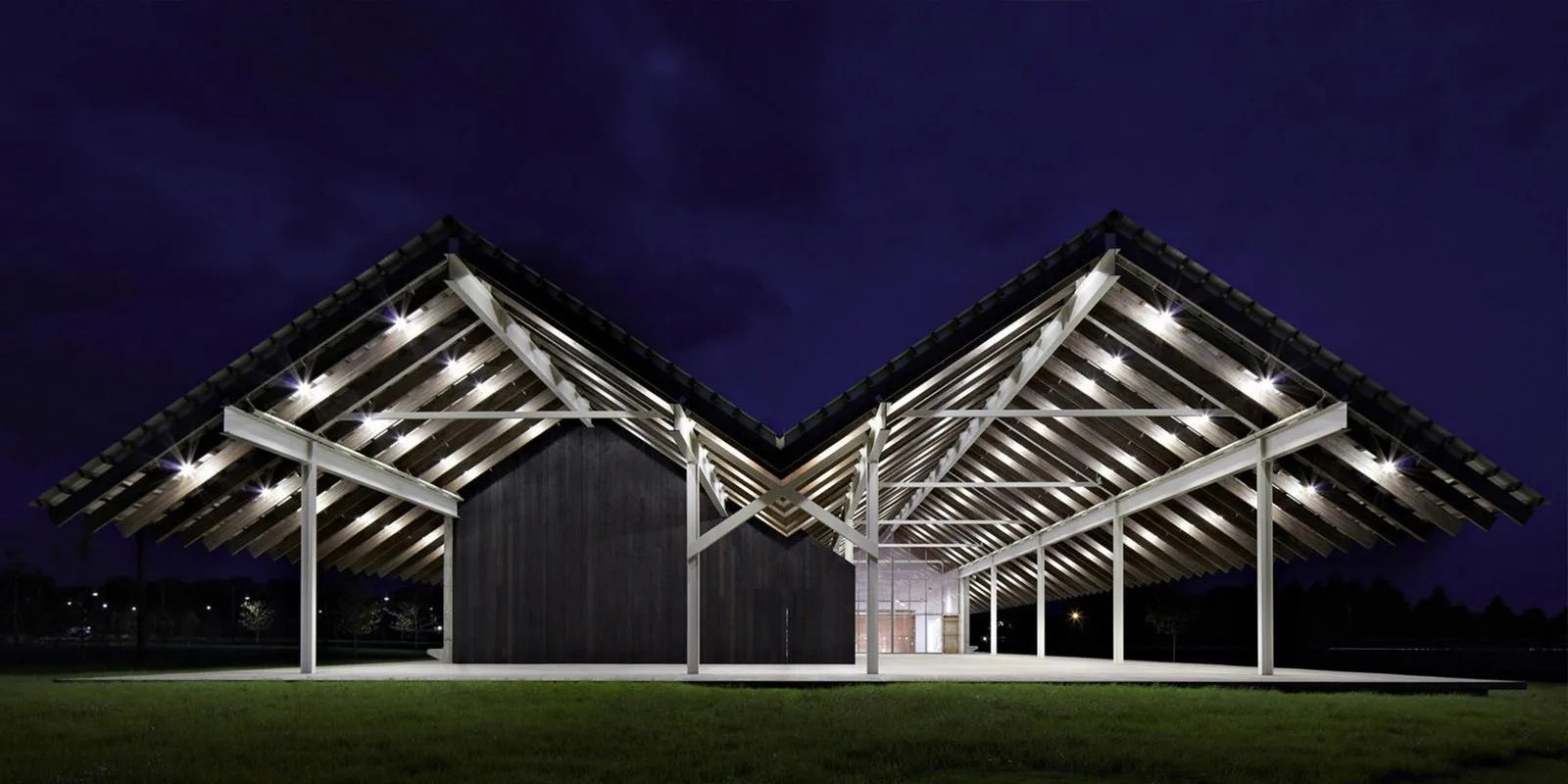
The new campus for the Parrish Art Museum was originally intended to be 30 modest buildings resembling artists’ studios, but — as is a theme in this list — the financial crisis of 2007 hit and forced a change in plans. The new, radically simplified plan involved a 34,000-square-foot barn with a single floor and an uncluttered layout. The result is a gallery that feels distinctly American. Whether that’s because of its unassuming design, farmhouse roots or beautiful long-island surroundings is up for debate, but it’s a magical place to view some of the American masters.
HERZOG & DE MEURON
2012
WATER MILL, NEW YORK
34,000 SQ FT
Seattle Central Library
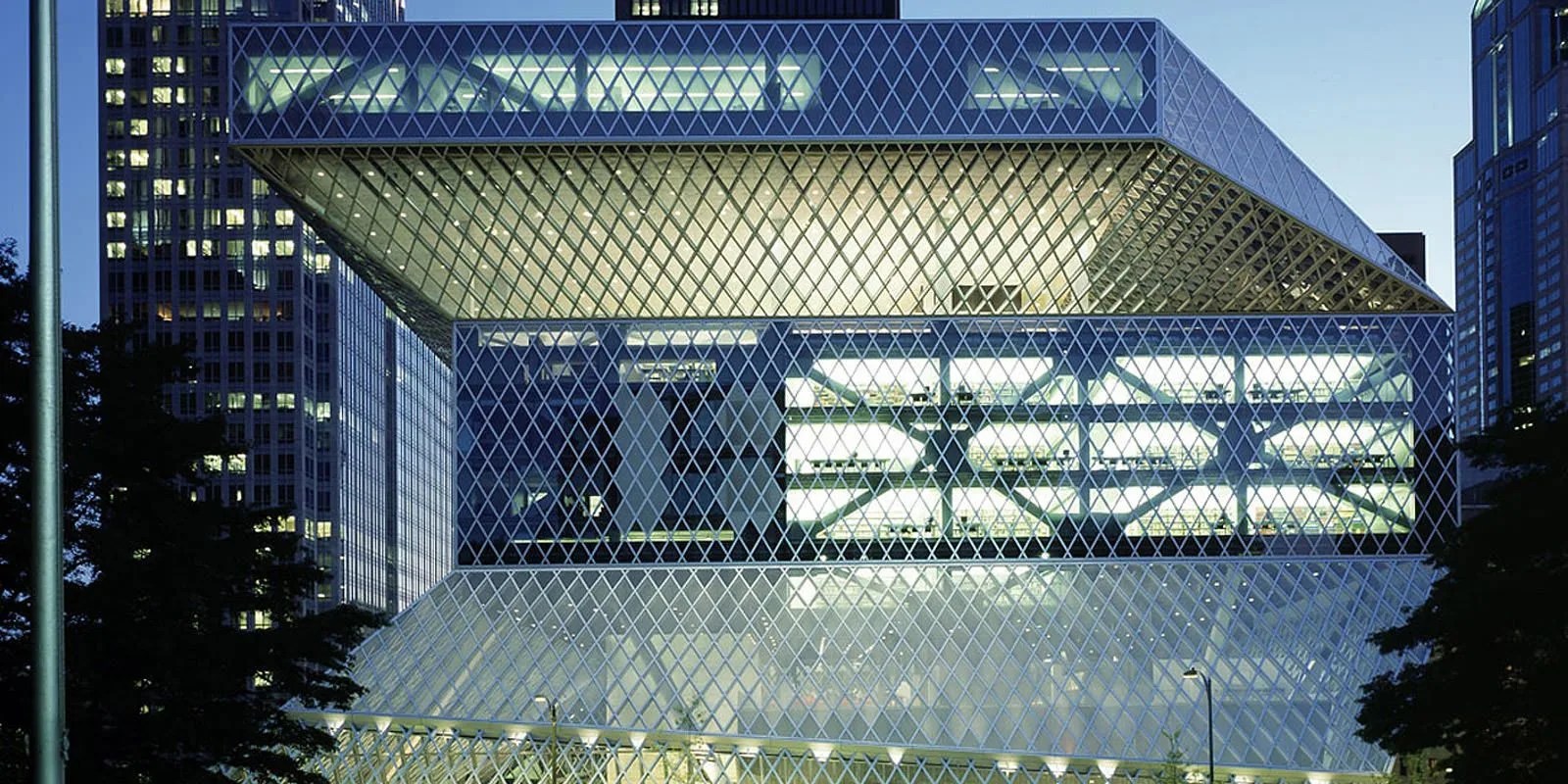
Designed as another form-dictates-function affair, the Seattle Central Library was intended from day one to be a sanctuary for books. The massive glass surfaces serve to brighten up the interior and vanquish any notions of a “stuffy” library. Interior features like an uninterrupted “book spiral” — a perfectly unbroken manifestation of the Dewey Decimal System spiraling up four floors — and multiple enormous reading rooms add further appeal to a living museum of knowledge.
REM KOOLHAAS / OMA / LMN ARCHITECTS
2004
SEATTLE, WASHINGTON
362,987 SQ FT
The Shard
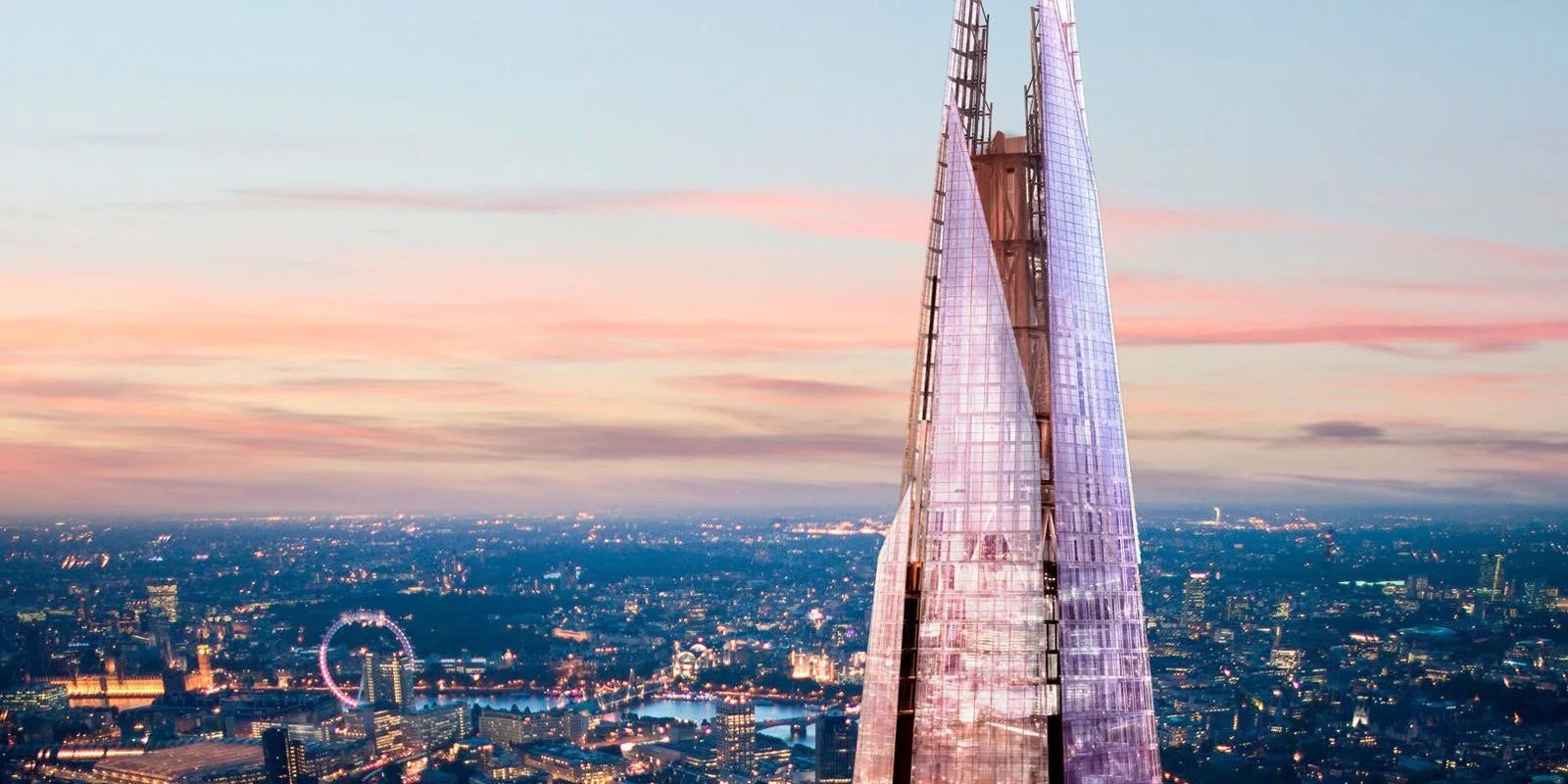
Londoners have an unfortunate tendency to give buildings pet names — be it the Gherkin, the Walkie Talkie, or most recently the Shard. Formerly known as the London Bridge Tower, the shard is an 87-story glass tower that looks like an extravagant transparent pyramid. Though it may be less nuanced architecturally than many other buildings, it is rather big, and that certainly counts for something. In an image of the London skyline, the Shard dwarfs everything else in the city — reason alone to call it iconic.
RENZO PIANO
2012
LONDON, ENGLAND
1,200,000 SQ FT
Statoil Office Building
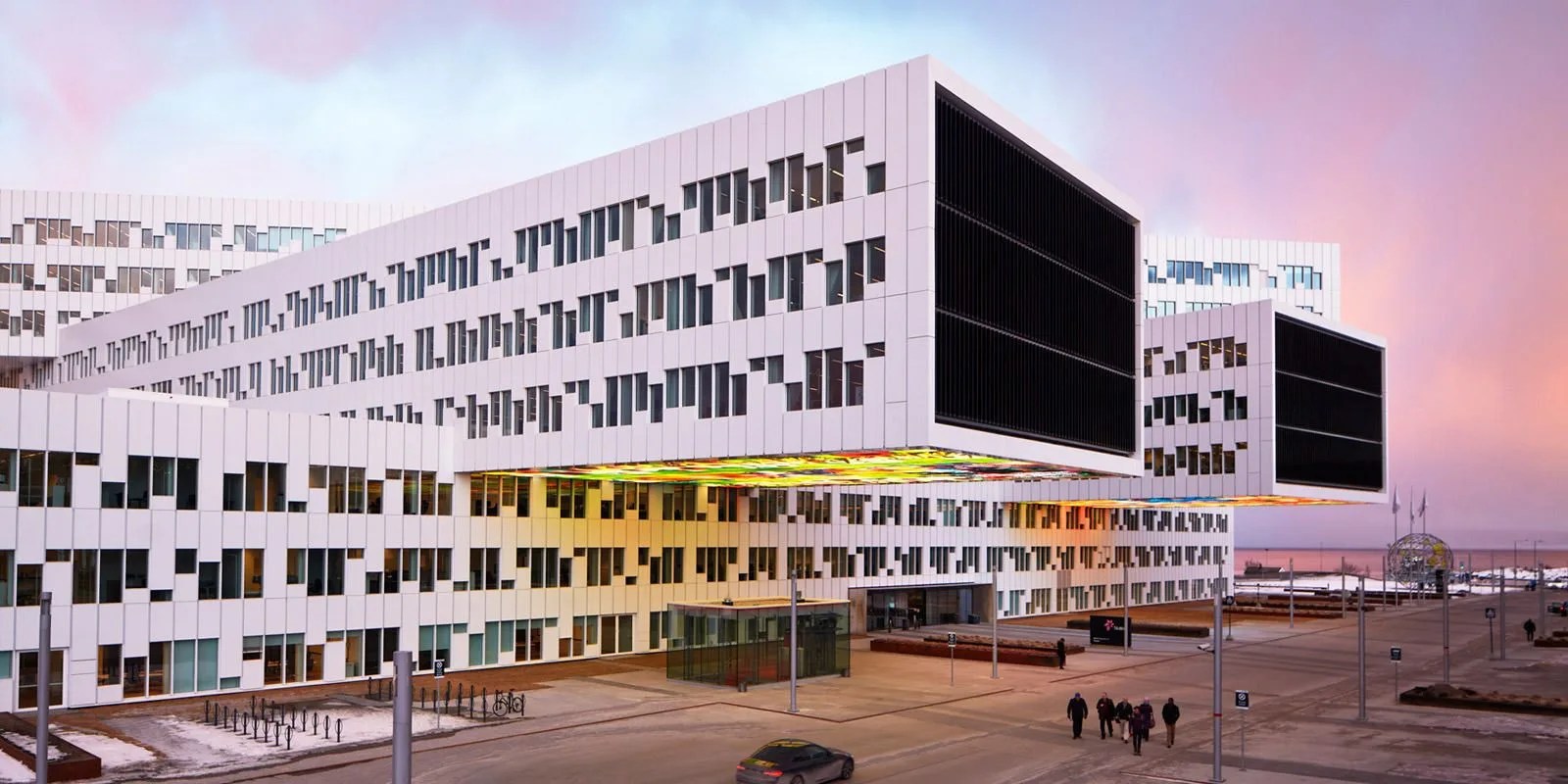
Built to headquarter 2,500 employees in an office park outside of Oslo, Statoil’s new global headquarters is a master class in designing a large building in harmony with its surroundings. At once, the massive building’s white walls and pale yellow lights seem to be a natural extension of the landscape while the massive, geometric shapes stand out amid rolling hills. Each overlapping section is arranged to offer exceptional views of the Oslo fjord and work within the idea that every employee deserves a prime working space. The center of the office building offers a massive central atrium with a convex glass roof, creating a central area that builds upon the office’s democratic and communal aspirations.
A-LAB
2012
FORNEBU, NORWAY
1,259,377 SQ FT
